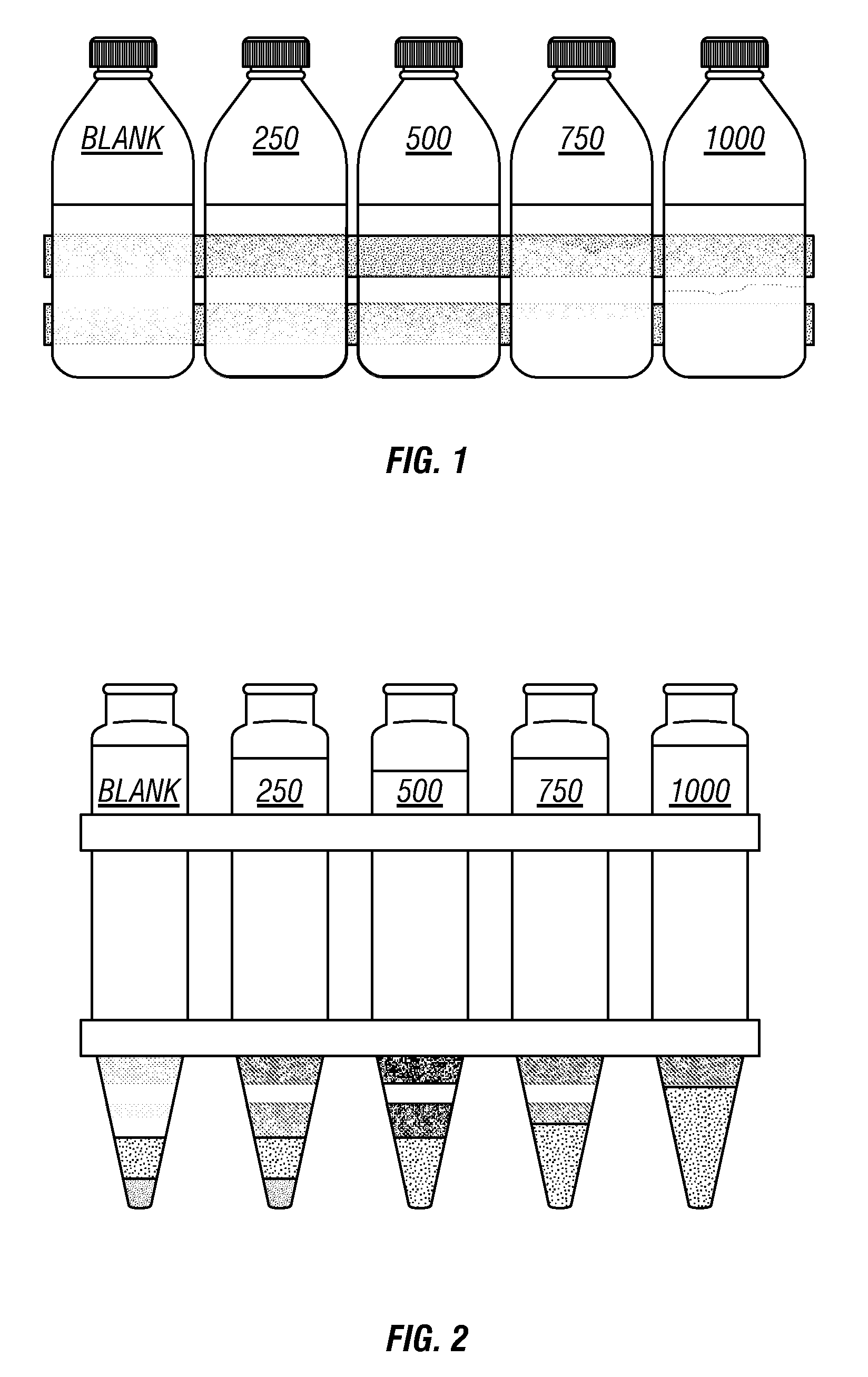Process for Clarifying Biofuels
a biofuel and process technology, applied in the field of biofuel clarification, can solve the problems of complex mixtures, biofuel processing is not without problems, and the processing of biofuels and biofuel feedstocks is not easy
- Summary
- Abstract
- Description
- Claims
- Application Information
AI Technical Summary
Problems solved by technology
Method used
Image
Examples
example 1
[0033]A sample of a biodiesel prepared from canola oil was used for the examples. The biodiesel was yellow and very hazy. The biodiesel was treated with varying concentrations of BIO 9975 from the Baker Petrolite Corporation as shown below in Table 1. This material is a copolymer of maleic anhydride, C20-24 alpha olefin, and C30+alpha olefin prepared using a di-t-butyl peroxide catalyst and then esterified using 1-octadecanol and behenyl alcohols.
[0034]The samples were treated and left undisturbed for 24 hours. The samples were then evaluated by placing the sample in front of a white background including a black line. The evaluations are displayed below in Table 1 and a photograph of the samples is attached as FIG. 1.
example 2
[0035]The same samples as used in Example 1 were allowed to sit undisturbed in centrifuge tubes and then centrifuged at 600 rcf for 10 minutes (i.e., relative centrifical force as per ASTM-4007). The centrifuge tubes were evaluated similar to Example 1 and the evaluations are displayed below in Table 1 and a photograph of the samples is attached as FIG. 2.
example 3
[0036]100 mL aliquots of the biodiesel feedstock (e.g., chicken fat & canola oil) were prepared and dosed with BIO 9975 at 500 and 750 ppm treatment rates. After addition of the additive, each sample was shaken to ensure complete mixing. The samples were then centrifuged for 10 minutes @ 600 rcf without any delay and the results are summarized in Table 2 showing the ppm metals sodium (Na), Potassium (K), & Magnesium (Mg) that were left in the top phase of the centrifuge tube as well as the percent (%) of these same metals that that had been centrifuged or separated out to the bottom phase where they could be easily removed.
TABLE 1Dose,Appearance BeforeAppearance AfterppmCentrifugeCentrifuge—Very hazy, no separationVery hazy, someseparation250Hazy, slight phaseHazy, phase separationseparation500Clear, phase separationClear, phase separation750Very slightly hazy, phaseVery slightly hazy, phaseseparationseparation1000 Slightly hazy, phaseHazy, phase separationseparation
TABLE 2ppmppmppm...
PUM
| Property | Measurement | Unit |
|---|---|---|
| concentration | aaaaa | aaaaa |
| temperature | aaaaa | aaaaa |
| volume | aaaaa | aaaaa |
Abstract
Description
Claims
Application Information
 Login to View More
Login to View More - R&D
- Intellectual Property
- Life Sciences
- Materials
- Tech Scout
- Unparalleled Data Quality
- Higher Quality Content
- 60% Fewer Hallucinations
Browse by: Latest US Patents, China's latest patents, Technical Efficacy Thesaurus, Application Domain, Technology Topic, Popular Technical Reports.
© 2025 PatSnap. All rights reserved.Legal|Privacy policy|Modern Slavery Act Transparency Statement|Sitemap|About US| Contact US: help@patsnap.com


